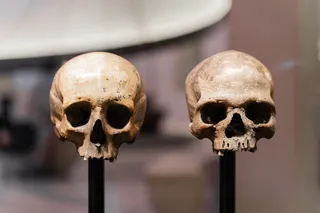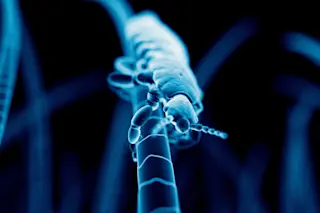Back in 2001, the Human Genome Project gave us a nigh-complete readout of our DNA. Somehow, those As, Gs, Cs, and Ts contained the full instructions for making one of us, but they were hardly a simple blueprint or recipe book. The genome was there, but we had little idea about how it was used, controlled or organised, much less how it led to a living, breathing human.
That gap has just got a little smaller. A massive international project called ENCODE – the Encyclopedia Of DNA Elements – has moved us from “Here’s the genome” towards “Here’s what the genome does”. Over the last 10 years, an international team of 442 scientists have assailed 147 different types of cells with 24 types of experiments. Their goal: catalogue every letter (nucleotide) within the genome that does something. The results are published today in 30 papers across three different journals, and ...














